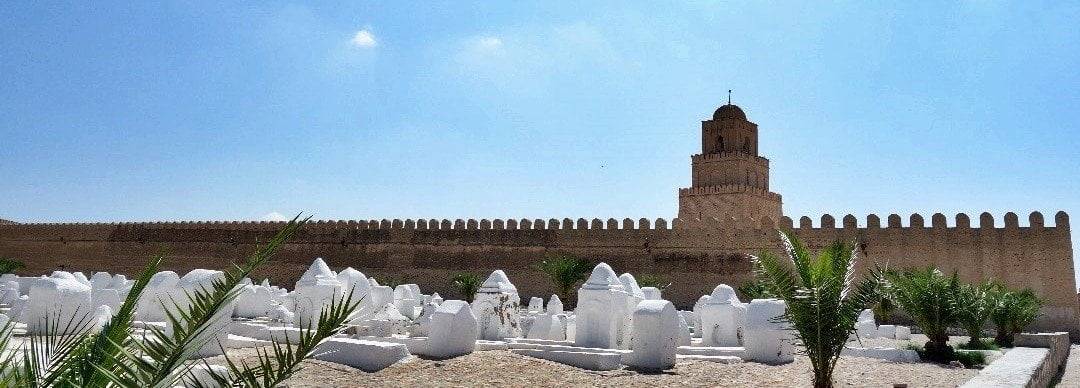UNESCO Tunisia: 8 World heritage sites

Last Updated on November 5, 2022
Tunisia is definitively an out-of-the-beaten-track destination. If you like to discover amazing places with few tourists around, then, Tunisia is a destination for you. Here are eight incredible UNESCO world heritage sites to explore:
Disclaimer: This post contains affiliate links, which means that if you click on any links and make a purchase, I’ll get a small commission, at no cost to you.
Amphitheatre of El Jem

El Jem, once a busy merchant city, is home to the third-largest Roman Amphitheatre in the world. Built based on the one in Rome, the architects also got inspired by the local architecture style. The amphitheater made 150 years later than the one in Rome (in the third century AD), benefited from several innovations such as the water system and the underground tunnels.
Read more about El Jem Amphitheater.
Archaeological Site of Carthage

Carthage was once one of the greatest Empires on the Mediterranean Basin. Everyone knows of its ferocious leader, Hannibal, who once crossed the Alps riding on Elephants’ back. He ended being defeated by Rome who later destroyed Carthage. Today only a few ruins remain from the Carthage Era, but there are still a lot of interesting Roman ruins to visit.
Medina of Tunis

Tunis’ Medina is exceptional; every corner hides a treasure. The souk is bustling every day with merchants, locals, and tourists mingling in a happy mess. A bit farther, the Great Mosque awaits you, listen to the sound of the prayer calls, and enjoy a bit of peace and quiet. Later visit a little café perched atop one of the many houses, enjoy the view over the medina, sipping on a mint tea.
Read more about Tunis and its Medina.
Ichkeul National Park

Ichkeul National Park is an important stop for several bird species on their migratory route. Between October and May, thousands of birds from around 180 species live in the park, some of them extremely rare.
Punic Town of Kerkuane and its Necropolis

In Kerkouane lay the ruins of a Punic city from the 6th century BC. Located in the middle of nowhere, the site has been protected from development and left untouched for centuries. From most of the buildings, only the foundations remain. The streets are still clearly visible, and some symbols/drawings are found here and there.
Related article: Roadtrip through Kerkouane and the Cap Bon
Kairouan

Tunisia’s spiritual capital, Kairouan is the first sacred place in the Maghreb and the fourth most sacred places in the world for Muslims. Founded in the 7th century, at the beginning of Islam’s expansion, the city was nicknamed “the 300 mosques city”. Kairouan has a magical touch attached to it, and a visit to its medina is a must-do if you’re traveling to Tunisia.
Related article: 7 Medinas to discover in Tunisia
Medina of Sousse

Sousse was founded during the 9th century BC by Phoenicians seamen. The medina was added later on, towards the 9th century. There are a lot of places to visit inside the Medina such as the Great Mosque, the ribat, the museum, and the Dar Essid.
Dougga / Thugga

Surrounded by olive trees and peaceful nature, the ancient city of Thugga, built in the 6th century BC, is one of the most interesting African-Roman archaeological ruins. Its size, the monuments’ state of preservation and the landscape, make Dougga Tunisia’s most spectacular site and most visited Roman ruins.
Related article: 12 Roman sites not-to-miss in Tunisia.
Like this article? Save it for later:










